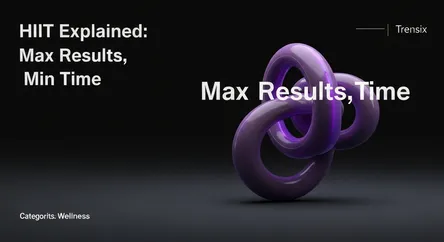Wellness
HIIT Explained: Max Results, Min Time

Discover High-Intensity Interval Training (HIIT), the time-efficient workout method delivering rapid fat loss and improved cardiovascular health.
What is it?
High-Intensity Interval Training (HIIT) is an exercise strategy that alternates between short bursts of intense anaerobic exercise and brief recovery periods. A HIIT workout involves pushing your body to 80-95% of its maximum heart rate for anywhere from a few seconds to a few minutes, followed by a period of rest or low-intensity movement. These workouts are typically short, often lasting under 30 minutes, and can incorporate cardio exercises like sprinting or bodyweight movements like squats and push-ups. The fundamental idea is to perform at maximum effort for a short interval before recovering.
Why is it trending?
The primary reason HIIT is so popular is its efficiency. It provides similar or greater health benefits than longer, moderate-intensity workouts in a fraction of the time, making it ideal for people with busy schedules. This time-saving aspect has made it a top fitness trend since 2014. Another major draw is its versatility. HIIT workouts don't require special equipment and can be performed almost anywhere, from a gym to a living room or a park. This blend of effectiveness and convenience makes it a highly accessible form of exercise for many.
How does it affect people?
HIIT delivers significant physiological benefits. It is exceptionally effective for fat loss because it burns a high number of calories in a short period and boosts a person's metabolic rate for hours after exercise, an effect known as EPOC or the "afterburn effect." This leads to greater fat loss than many steady-state cardio workouts. It also greatly improves cardiovascular health by lowering blood pressure and resting heart rate. Additionally, HIIT has been shown to help reduce blood sugar levels, improve insulin sensitivity, and increase muscle mass.